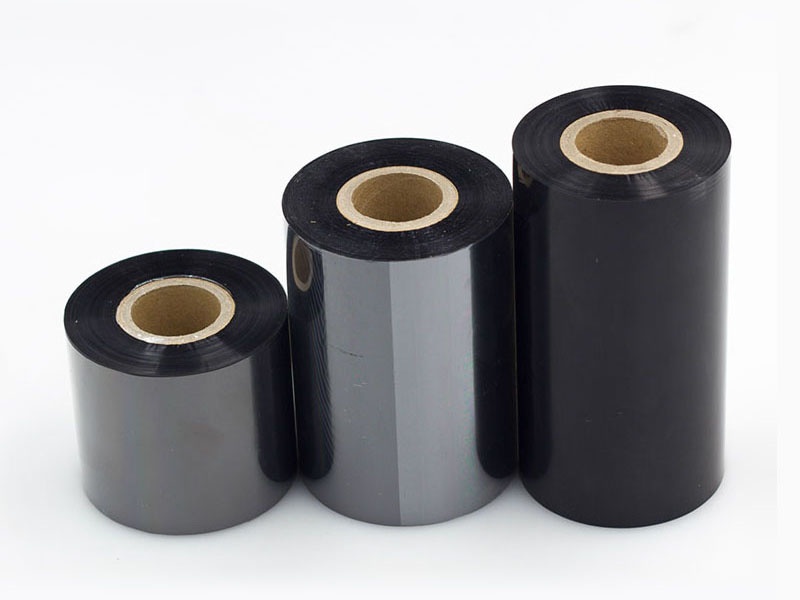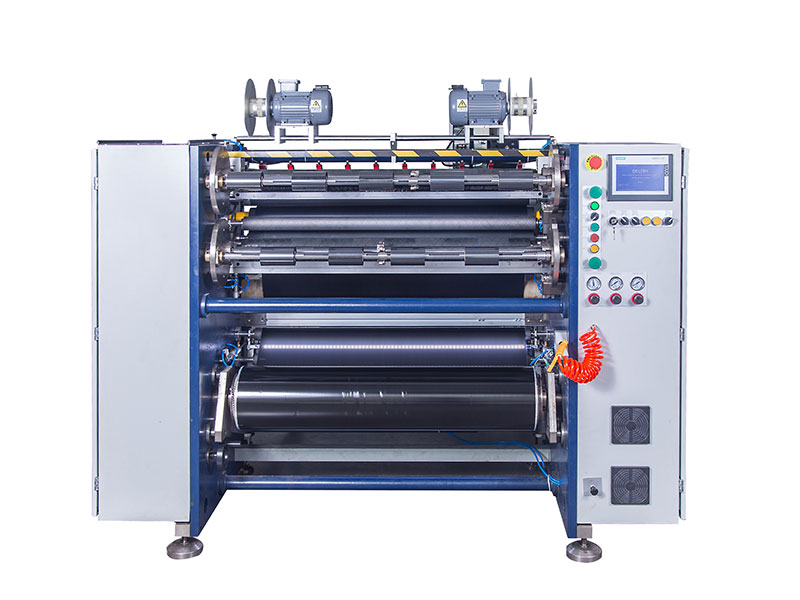The ribbon slitting machine achieves 0.1mm high-precision slitting and ensures print quality, mainly relying on precision mechanical design, intelligent control system and strict process management. Here are the key techniques and measures:
1. High-precision mechanical structure
• Precision slitting knife system
Cemented carbide or diamond tools are used with a highly rigid spindle to ensure a flat and burr-free cutting edge. The dynamic balance design reduces vibration and avoids material deformation during slitting.
• Tension control system
Closed-loop tension control (e.g., magnetic powder brake + sensor) keeps the ribbon tension constant (typically ± 0.1N) during slitting and prevents material stretching or wrinkling.
• Guiding Device (EPC)
Infrared or ultrasonic sensors monitor the edge position of the ribbon in real time and automatically adjust the lateral offset of the coil (accuracy ± 0.05mm) to ensure the straightness of the slitting.

2. Intelligent control technology
• Servo drive system
High-resolution encoder (such as above 17 bits) with servo motor to control the slitting length error ≤± 0.05mm.
• Visual inspection system
The industrial camera detects the slitting width (such as CCD measurement) online, adjusts the tool position with real-time feedback, and adapts to different specifications (such as 6mm, 12mm, etc.) narrow ribbons.
• Temperature management
Constant temperature control in the slitting area (±1°C) reduces the influence of thermal expansion and contraction on material size.

3. Material and process optimization
• Ribbon substrate treatment
Static elimination (such as ion air rods) is carried out before slitting to prevent the film from absorbing dust; The coated ribbon needs to control the slitting speed (usually 20-50m/min) to avoid coating peeling.
• Dust-free environment
Clean workshops (ISO Class 8 and above) reduce particle contamination and avoid white spots or broken wires during printing.
• Optimization of cutting edge angle parameters
The tool angle is typically 20°-30°, adjusting the pressure according to the ribbon thickness (commonly 4.5-12μm) to ensure a smooth section.

4. Quality verification system
• Online testing
The laser diameter meter monitors the slitting width in real time and automatically alarms for over-deviation. Sampling for 3D microscopy of edge burrs (≤ 5 μm required).
• Print test
After slitting, the ribbon needs to be verified by a high-speed printer (such as 300mm/s) to ensure that there is no blurring or skipping (resolution ≥ 300dpi).
• Industry standard compliance
Compliant with ASTM F1628 (ribbon adhesion test) and ISO 9001 quality management system.
Practical application cases
An industrial-grade ribbon slitting machine uses a linear guide rail (repeat positioning accuracy ±0.005mm) + laser tool setting system to control the slitting tolerance within ±0.03mm, so that the PCS value (printing contrast) of the printed barcode can be stable to A level (≥0.9).
Through the integration of these technologies, the 0.1mm slitting accuracy not only meets the printing needs of high-density barcodes (such as QR Codes) but also reduces ribbon waste (slitting waste rate <0.5%).
 Long-term reliability maintenance guide for ribbon slitting machines
Long-term reliability maintenance guide for ribbon slitting machines One-Click Operation: How the Convenience of Ribbon Slitting Machines Reshapes Workflows
One-Click Operation: How the Convenience of Ribbon Slitting Machines Reshapes Workflows Ribbon slitting machine: when precision meets user-friendly, the humanistic change of industrial design
Ribbon slitting machine: when precision meets user-friendly, the humanistic change of industrial design The Blade of Precision: How Ribbon Slitting Machines Become the Invisible Guardians of Print Quality
The Blade of Precision: How Ribbon Slitting Machines Become the Invisible Guardians of Print Quality Beyond Slicing: The Evolution of Ribbon Slitting Machines in the Productivity Revolution
Beyond Slicing: The Evolution of Ribbon Slitting Machines in the Productivity Revolution